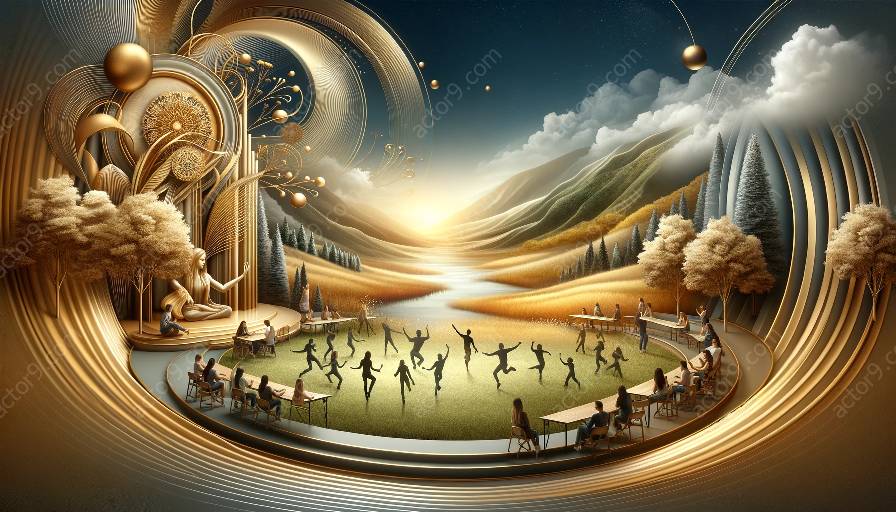Physical theatre serves as a powerful tool for promoting interdisciplinary collaboration and learning within university settings. By incorporating elements of physicality, expression, and creativity, physical theatre creates a platform for students and faculty from diverse disciplines to collaborate, innovate, and learn in new ways. This enriching approach to education not only fosters artistic and creative skills but also emphasizes the importance of working across different fields of study. This topic cluster delves into the ways in which physical theatre contributes to interdisciplinary collaboration, its impact on learning in university settings, and its role in physical theatre education.
The Role of Physical Theatre in Interdisciplinary Collaboration
Physical theatre offers a unique opportunity to bridge gaps between different disciplines. It provides a space where students from various academic backgrounds can come together and explore ideas through movement, expression, and performance. Through this collaboration, students are able to gain insights from different perspectives, fostering a sense of empathy and understanding that goes beyond traditional academic settings. The physicality of the art form allows individuals to communicate and connect in ways that transcend linguistic and cultural barriers, serving as a catalyst for interdisciplinary collaboration in university settings.
Enhancing Learning through Physical Theatre
Physical theatre challenges students to think critically, adapt to new concepts, and communicate non-verbally. These skills are essential for success in a rapidly changing world and are transferable to a wide range of academic and professional pursuits. By engaging in physical theatre, students develop an enhanced understanding of their own bodies, emotions, and expressions, leading to improved self-awareness and empathy. The collaborative nature of physical theatre also encourages students to work together, problem-solve, and innovate, enhancing their overall learning experience.
Physical Theatre in Education
Integrating physical theatre into the university curriculum immerses students in a holistic learning experience. By exploring physical storytelling, movement, and improvisation, students develop a deeper appreciation for the intersection of art, culture, and human expression across disciplines. This approach not only enhances creativity but also nurtures a sense of inclusivity and diversity, fostering a dynamic learning environment that reflects the complexity of the world beyond the classroom.
Conclusion
Physical theatre serves as a catalyst for interdisciplinary collaboration and learning in university settings, offering a unique and enriching educational experience. By embracing physicality, expression, and creativity, students and faculty can engage in a collaborative journey that transcends traditional disciplinary boundaries. The integration of physical theatre in higher education not only promotes a holistic approach to learning but also prepares students for a diverse and interconnected world.




































